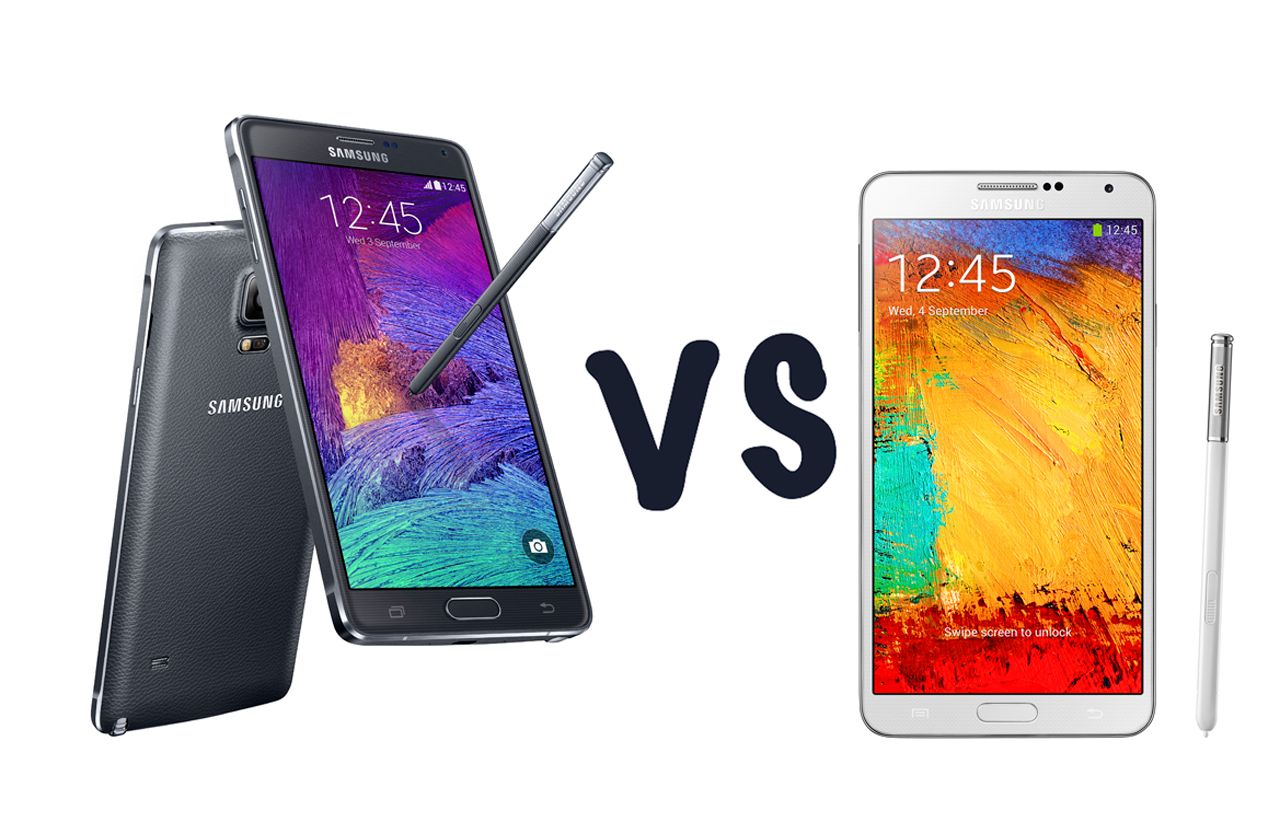Samsung has announced the Samsung Galaxy Note 4. But just how does the device compared to its predecessor, the Galaxy Note 3?
We have put the the Galaxy Note 4 up against the Galaxy Note 3 in order to determine the differences, similarities, and whether your hard-earned money should go toward the latest product to emerge from Samsung.
Keep in mind we've reviewed the Galaxy Note 3, but we haven't yet reviewed the Galaxy Note 4. Although this comparison will walk you through the listed specs and hardware, true real-world results are still to be determined.
So, which should you consider buying, for now: the Samsung Galaxy Note 4 or the Samsung Galaxy Note 3?
Display
The Galaxy Note 4 features a 5.7-inch 2560 x 1440 Super AMOLED display with a pixel density of 550ppi. The Galaxy Note 3 features a 5.7-inch Super AMOLED display with a pixel density of 386 ppi. That means the Galaxy Note 4 has an equal-sized display but a much higher pixel density.
That means more detail for the Note 4 and it is better able to handle fine detail, especially when it comes to multi-tasking. If the display quality is what it's all about, then the Note 4 is the one for you.
There's another difference, however. When you see the Note 4 in the flesh, there's more pop to the visuals. This comes down to a slight curve in the display surface on the Note 4. It's flat on the touch surface, but everso slightly curved underneath and that makes a difference.
Processor
The Galaxy Note 4 features a Qualcomm Snapdragon 805 2.7GHz or Exynos 1.9GHz octo-core chipset (depending on territory) as well as 3GB of RAM. The Galaxy Note 3 features a 2.3GHz Qualcomm Snapdragon 800 or 1.9 Exynos 5 Octa chipset as well as 3GB of RAM.
The Galaxy Note 4 offers the first 805 we've seen, and that's plenty enough to make the device win this round for now. Both will be swift devices, but the upgraded silicon should make for future support for 64-bit Android, better power efficiency and slicker multi-tasking.
Storage
The Galaxy Note 4 features 32GB of on-board storage, with microSD card support.
The Galaxy Note 3 features 16GB, 32GB, and 64 on-board storage variants, with microSD support for cards up to 64GB, and 50GB of free cloud storage through Dropbox for 2 years.
We suspect the Note 4 will get the same Dropbox deal, so this round remains pretty close.
Battery
The Galaxy Note 4 features a 3220mAh battery and a power-saving mode, while the Galaxy Note 3 features a 3220mAh battery.
The differences are way too slight to immediately name the Note 4 as the winner of this round, especially because it has a beefier display and chipset that could drain battery life faster.
This is one difference we can't resolve without spending much more time with the Note 4.
Camera
The Galaxy Note 4 features a 16MP rear-facing camera (f/2.4 aperture) with optical image stabilisation. It can also capture 4K Ultra HD video. The front camera is 3.7MP (f/1.9 aperture) with a 90-degree wide angle by default that goes up to 120-degree for wide selfies.
The Galaxy Note 3 features a 13MP rear-facing camera with autofocus and LED flash as well as a 2MP front-facing camera. The Galaxy Note 4 appears to offers the better camera set on paper.
OS
The Note 3 and the Note 4 are built for the same purpose. Both run Android and both offer Samsung's TouchWiz and customisations over the top.
Samsung has been pretty good at bringing new features to legacy devices. Although at launch the Note 4 will be the latest and greatest, we suspec there will be an update to accomodate the new software features in the Note 3.
However, with a better S Pen on the Note 4, as well as an extra hardware button, the Note 4 will offer the better experience.
Build
There's little to call here. The Note 3 and the Note 4 offer similar design, with Samsung sticking to the faux leather finish.
We think both feel great in the hand.
Conclusion
The Galaxy Note 4 clearly offers more than the Galaxy Note 3 in terms of display, processor, camera, and more specs, mostly because it is both an update and a successor device.
Is that going to be enough to get you to trade in your Note 3 for the 4? That probably comes down to how much you want that new higher-resolution display, as that's where the difference really lies. Whether that has an impact on the battery life remains an issue too: something we'll look at in a full review.

